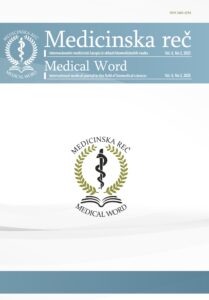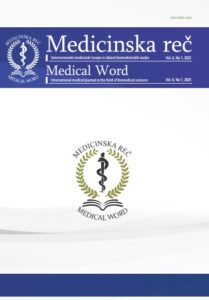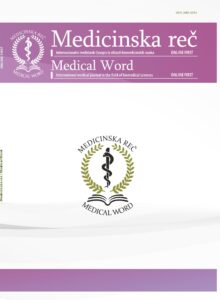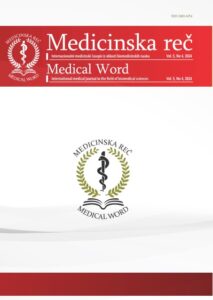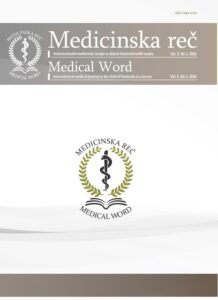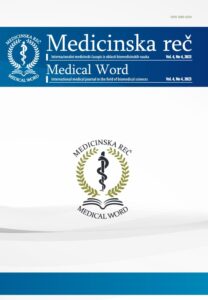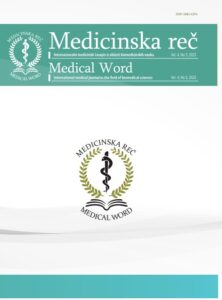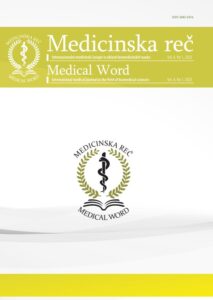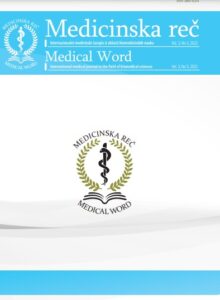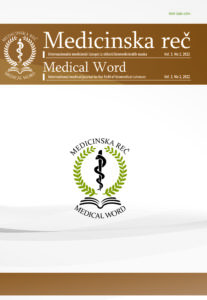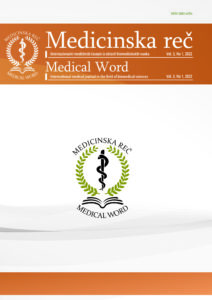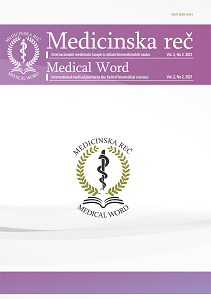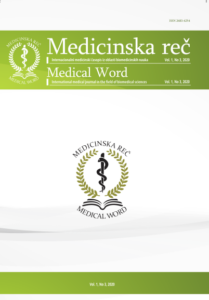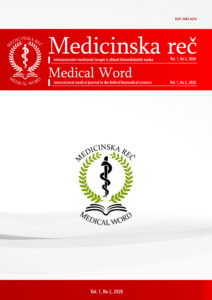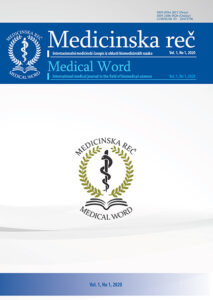Prevencija kontraktura u lečenju teških formi opekotina kod dece Apstrakt
Originalni rad
Danijela Đerić, Aleksandar Marinković, Strahinja Konstantinović
105–110
https://doi.org/10.5937/medrec2304105D
Apstrakt
Opekotine su jedne od najtežih i najučestalijih povreda u pedijatrijskoj populaciji. Cilj u lečenju opekotina podrazumeva kompletnu epitelizaciju opečene regije, rehabilitaciju pacijenata i sprečavanje postoperativnih i postopekotinskih komplikacija.
Cilj ovog rada bio je prikazati karakteristike opekotina, njihovu učestalost, procentualnu zastupljenost u odnosu na dubinu opekotine, učestalost pojave postopekotinskih kontraktura kod dece i ukazati na moguće mere prevencije istih.
Ovom retrospektivnom studijom obuhvaćeno je ukupno 167 dece. Analizirana je distribucija opečene dece prema uzrastu, etiološki faktori nastalih opekotina, stepen opekotina, vrsta lečenja, kao i učestalost nastanka kontraktura.
Bilo je 105 dečaka (63%) i 62 devojčice (37%). Najviše opekotina je bilo u uzrastu od 2. do 5. godine, kod ukupno 96 dece (57%), značajnije u odnosu na decu do godinu dana, 31 dete (19%), i decu stariju od 5 godina, 40 (24%). Najveći procenat opekotina je nastao dejstvom vrelih tečnosti i to kod 133 dece (80%). Bile su ukupno 102 opekotine II stepena, (61.07%) i 65 opekotina III (38.92%). Keloidni ožiljci, sa posledičnim kontrakturama su verifikovani kod opekotina IIB i III stepena kod ukupno 23 dece (13.77%), i to kod petnaestoro (65.2%) dece sa opekotinama III stepena i kod osmoro (34.8%) dece sa opekotinama IIB stepena.
Najveći broj opekotina nastaje dejstvom vrelih tečnosti. Veoma često mogu biti rezultat zlostavljanja ili zanemarivanja dece. Pravilnim izborom lečenja i merama prevencije mogu se redukovati komplikacije. Veoma je važan značaj prevencije istih i značaj socijalne podrške i rada, kako sa decom, tako i sa roditeljima opečene dece.
Ključne reči: opekotine, deca, prevencija, kontrakture
Literatura
- Strobel AM, Fey R. Emergency Care of Pediatric Burns. Emerg Med Clin North Am 2018 ; 36(2): 441–58.
- Greenhalgh DG. Management of Burns. N Engl J Med 2019; 380(24): 2349–59.
- Krstić Z i saradnici. Osnovi dečije hirurgije. Beograd: Beogradsko mašinsko-grafičko-preduzeće; 1993.
- Dupree MT, Boyer JD, Cobb MW. Marjolin’s ulcer arising in a burn scar. Cutis 1998; 62: 49–51.
- Tredget EE. Total Burn Care. Can J Surg 1996; 39 (5):434–5.
- Ring LM. Kids and hot liquids–a burning reality. J Pediatr Health Care 2007; 21(3): 192–4.
- Ruan J, Xi M, Xie W. Analysis of 12,661 pediatric burns in Wuhan institute of burns: A retrospective study of fifteen years. Burns 2021; 47(8): 1915–21.
- Libber SM, Stayton DJ. Childhood burns reconsidered: the child, the family, and the burn injury. J Trauma 1984; 24(3): 245–52.
- Rimmer RB, Weigand S, Foster KN, Wadsworth MM, Jacober K, Matthews MR, Drachman D, Caruso DM. Scald burns in young children–a review of Arizona burn center pediatric patients and a proposal for prevention in the Hispanic community. J Burn Care Res 2008; 29(4): 595–605.
- Kao CC, Garner WL. Acute burns. Plast Reconstr Surg 2000; 105: 2482–93.
- Fufa DT, Chuang SS, Yang JY. Postburn contractures of the hand. J Hand Surg Am. 2014; 39(9): 1869–76.
- Goverman J, Mathews K, Goldstein R, Holavanahalli R, Kowalske K, Esselman P, et al. Adult Contractures in Burn Injury: A Burn Model System National Database Study. J Burn Care Res 2017; 38(1): 328–36.
- Woolard A, Wickens N, McGivern L, de Gouveia Belinelo P, Martin L, Wood F, et al. “I just get scared it’s going to happen again”: a qualitative study of the psychosocial impact of pediatric burns from the child’s perspective. BMC Pediatr 2023; 23(1): 280–5.
- Woolard A, Bullman I, Allahham A, Long T, Milroy H, Wood F, et al. Resilience and posttraumatic growth after burn: a review of barriers, enablers, and interventions to improve psychological recovery. Eur Burn J 2022; 3(1): 89–121.
- Lernevall LST, Moi AL, Gjengedal E, Dreyer P. Parents’ lived experience of living with and caring for their burn-injured child in a home setting. Int J Qual Stud Health Well-being 2023; 18(1): 2216032.



